Wiley 978-0-7645-4402-6 Datasheet
- Category
- Software manuals
- Type
- Datasheet

Designing Applications
Access 2002 is mostly a very intuitive and easy to use application. From the early days of
Access, usability has always been one of the primary development focuses behind Access. In
fact it was this ease of use that was a major factor in the incredible speed with which Access
came to be accepted as the definitive desktop database development tool.
But Access has always appealed to a wider audience than simply end users and inexperienced
developers. Behind its ease of use, Access has always provided a very powerful database and
application development tool – more recent releases of Access have extended this power even
further with the introduction of features such as Access Database Projects (ADPs), Data Access
Pages (DAPs) and the adoption of VBA (Visual Basic for Applications) version 6 as its
programming language.
In this chapter, we introduce the application we will be developing throughout the course of
this book. After that, we'll contrast the differences between macros and VBA, and highlight one
of the limitations you will encounter when using macros.
But before any of this, let's begin by defining what an Access Application is, and take you
through the design processes you ought to consider before you even begin coding.

Chapter 1
12
What Is an Access Application?
An Access application is just the same as any other kind of application, but one built using
Access tools. It is a collection of interrelated objects working together to achieve a specific
objective, usually business-orientated.
That didn't tell us that much, did it? Maybe we should have asked a different question:
What makes an Access application different from any other kind of application?
The main difference is that Access is designed from the ground up to handle data, quickly,
efficiently, and lots of it. Access applications therefore tend to be data intensive. Using Access
to create such applications can be easier and faster and can produce better results than using
anything else. Obviously today's applications also need to be able to present a modern and
efficient graphical user interface and to allow for all sorts of additional functionality, like
connections to other applications or to the Internet – Access provides for this as well, but this is
not its primary goal. It is, for example, entirely possible to create an Access application that
simulates shooting missiles at alien spacecraft as they move across a Martian landscape but this
would certainly not be the best way to do it!
When you create a new database file (
.mdb file) in Microsoft Access 2002, the first thing that
you see is the database window. This is a container that will eventually hold a wide variety of
different objects. Tables will be used to store data; queries will be designed to retrieve data in
meaningful ways; forms, reports, and data access pages will all be used to display the results of
those queries in ways that users can understand; and macros and VBA modules will provide
the program logic which 'glues' the whole application together.
If you use Access 2002 to create a project (
.adp file) instead, then the database window will
also show additional server-side objects (such as database diagrams and stored procedures),
which may also be included to make up the application.
All of these objects can play an important role in providing the functionality of the end product
– whether it is hosted solely in an Access database or uses a client-server database project.
The aim of this book is to illustrate the important role played by VBA in orchestrating these
objects, in binding them together through the use of logic to control workflow and to
implement specific business rules, and in turning a collection of individual objects into a
coherent and effective application. Yes, we want to teach you how to use VBA, but to do that
without first telling you how to design an application would be irresponsible.

Designing Applications
13
The Development Process
There are many skills involved in the development and delivery of successful Microsoft Access
2002 applications. The database designers need to be able to understand the principles of
relational database design, so that they can design the tables that will hold the data and the
relationships between those tables. The application developers need to have a feel for the
graphical user interface (GUI) design, so that the forms they design for users to interact with
will be intuitive and easy to use. They will also need to understand both SQL (Structured Query
Language) and VBA so that they can write queries and procedures that not only return the
correct data or perform the required task, but also do so quickly and efficiently.
There are other less technical (but no less complex) skills to master. Analysts need to be able to
understand the business requirements of the users for whom the application is being designed,
and to translate these requirements into a design specification from which the developers can
work. Technical documenters need to be able to articulate how the application works, to
anticipate confusions that users might experience and to clearly express their thoughts in
documentation that is both accessible and informative. Test engineers need to be rigorous in
their approach, perhaps using formal methodologies to check for errors, and must not take
anything for granted when evaluating the application. Last, but certainly not least, project
managers need to know how to monitor progress and track resource usage to ensure that the
application is delivered on time and within budget.
Sometimes, if the application being developed is large-scale or complex, then there will be
many different people involved in the application development lifecycle. Some will be
responsible purely for analysis or design, others will work solely on designing queries or
developing forms, and yet others will be responsible for other tasks, such as migrating legacy
data into the Access database or producing user documentation. But at other times, particularly
if the application is less complex, or if resources (such as money or people) are scarcer, then it is
not uncommon for many of these tasks to be undertaken by individuals. Indeed, in many
situations, a single person can be responsible for the entire analysis and development process.
Irrespective of the number of people involved, or the development methodology employed, the
development lifecycle for an Access application will typically involve the following steps:
Analysis
Design Coding Testing Documentation Acceptance Review
In practice, however, these steps do not rigidly follow one after another. There can be
significant overlaps and the project can iterate through some of these steps before progressing
on to others. It is beyond the scope of this book to enter into a detailed discussion of different
project lifecycle plans. However, it is undoubtedly true that the speed with which Access forms
and reports can be produced makes Access an excellent tool for using in a more iterative
lifecycle model. In such a situation, the lifecycle would look more like this:

Chapter 1
14
Preliminary
Analysis
High-Level
Design
Detailed
Design
Coding
Testing
Acceptance
Review
Documentation
Detailed
Design
Coding
Testing
Acceptance
Review
Documentation
Review
Detailed
Design
Coding
Testing
Acceptance
Review
Documentation
The Analysis Phase
Irrespective of the type of project lifecycle mode, the first stage, and one of the most important
to get right, is inevitably one of analysis. Without adequate analysis you will not be able to
determine what the user wants from the application, the technical infrastructure within which
the application will be implemented, and the constraints imposed by the data with which you
will be working. Repairing the damage done by inadequate analysis, at a later date, can prove
very costly or even kill a project completely.
Requirements Analysis
The starting point for creating any successful Access application is to have a clear
understanding of what the users of an application want out of it. You need to know this before
you can even start to think about how to design any solution. The sorts of questions you will
need to ask in this stage include, among others:
❑ What is the business process we are trying to automate?
❑ What benefit is the new application designed to achieve? How will we measure
the benefit?
❑ Do we simply want to automate the existing process, or restructure the process and
automate it?
❑ Will the application have to interoperate with other existing or planned systems
or processes?
❑ What volume of data will the application be expected to handle?

Designing Applications
15
❑ How many users will be using the system at the same time (concurrently)? How many
in total?
❑ What is the anticipated mix of insert and update activity compared to query and
reporting activity?
The problem is that the only people who can answer these questions are the customers who will
use the finished application, and sometimes it can prove difficult to get answers out of them. It
might be that the demands of their current business are so pressing that they have little time to
answer questions about some future application. It might be that the sensitivities of internal
office politics will make them unwilling to be too helpful in designing an application in which
they feel they have too little ownership. Or it may be that they are trying to be helpful, but just
don't know the answers to these questions, because it is something they have never thought
about. Don't feel bashful about asking questions, however stupid some of them might sound.
What might seem illogical and "obviously wrong" to an outsider might turn out to be a vital,
but unspoken, business practice that simply must be implemented in order for the application
to be acceptable. Once you think you understand a process it is often useful to run it past the
client again for confirmation. Use these discussions to prompt further questioning to fill in any
gaps. In any case, it is vital to try to approach this phase of the project with as few
preconceptions as possible.
Requirements analysis is a skilled art and many organizations fail to appreciate the fact that
good developers do not necessarily make good analysts. In fact, in many ways, developers
make the worst analysts. By their very nature, good developers are constantly looking for
detailed solutions to problems. Someone mentions a business requirement and you can almost
hear the cogs whirring in their brains as their eyes glaze over and they start working out how
they will produce a solution to that requirement; without stopping to ask what the value of
satisfying that requirement is, or even if the requirement truly exists. That is not what you want
from an analyst. You want an analyst to be able to take an objective look at the requirement
expressed by the user, to check that they understand it correctly, to ask what the relevance of
this requirement is to the business, to determine the metrics (ways of measuring) by which the
successful implementation of the requirement can be judged and to express that requirement in
a way that other parties involved in the project will understand.
A variety of tools and methods are available to assist the requirements analysis process. For
example, JAD (Joint Application Development) is a technique that assists requirements
definition by bringing all of the various parties who are interested in the development together
in intense off-site meetings to focus on the business problem to be solved rather than worrying
about specific technical issues.
Whether you use such techniques is up to you. What is important is that you value the
requirements analysis process. This phase of a project is so important because it is the
fundamental mechanism for defining both the scope of the project and the critical success
factors that show when the project has achieved its requirements. It forms the basis for the
contract between the users and the developers, and is the touchstone to be used when resolving
conflict or confusion later on in the project lifecycle.

Chapter 1
16
Ironically, the importance of sound requirements analysis is most clearly seen in its absence.
When requirements are not properly defined or documented, one of two consequences almost
inevitably follows. Either the requirements remain unmodified, with the result that the
application fails to achieve its client's objectives; or the requirements are modified later in the
development cycle. Late changes such as these can have a huge impact on project costs as their
effects 'ripple' out and affect other areas such as documentation, design, coding, testing,
personnel assignments, subcontractor requirements, and so on. Indeed, some studies indicate
that such changes can be 50 to 200 times more expensive than they would have been if they had
been made at the appropriate time!
Prototyping
Prototypes, pre-development versions, proof of concepts, nailed-up versions – it doesn't matter
what name you give them; they are all attempts to further refine the analysis phase of the
project. Access used to be seen as being "only" a prototyping tool with the "real" development
given over to something more "industrial strength". This is no longer the case, however (if
indeed it ever really was). Access is perfectly up to the job of all but the most demanding
projects. It still makes a marvellous tool for prototyping though.
A prototype is a scaled-down version of the final application, which can be achieved at low cost
and within a short timescale. It may have certain functionality incomplete or missing entirely. It
may even only implement a tiny part of the whole project. The whole point of the prototype is
to test those areas of the design that are currently uncertain. This may include a number of
different methods to achieve the desired functionality, or perhaps alternative GUI designs to
see which is easiest to use, or maybe sample queries with test data to determine what kind of
hardware platforms will be required to attain the desired performance.
One thing you should never see is a prototype as v1.0 of the application. This is invariably a
recipe for disaster. The temptation is to take the prototype and keep developing it without first
going through all the other formal processes described below. You should always see the
prototype as part of the analysis phase of the project and not the end of it; it exists to ask
questions and to get them answered. If certain parts of the prototype later make their way into
the final application (the GUI design would be a good example) then all well and good, but
ideally you should plan and cost the work separately.
Technical Analysis
As well as determining the nature of the solution required by the users of the application, it is
also necessary to determine the technical infrastructure that will support this solution. The
types of questions posed are ones such as these:
❑ What operating system will the application run on?
❑ Will we need different versions of the application for different clients (for example,
one for customers and one for managers)?
❑ What is the specification (that is, in terms of processor, memory, disk space) of the
machines that the application will run on?

Designing Applications
17
❑ What type of network will connect the computers? Will lack of available bandwidth
prove a problem?
❑ What security policy will the application need to operate?
❑ What type of fault tolerance or recovery issues will need to be considered?
The purpose of the technical analysis should be to produce an application architecture and
implementation framework within which the resultant application will nestle. Again, it may
well turn out that developers are not the best people to undertake this type of analysis.
Technical analysis requires a good understanding of networking, security, and technical issues
and these skills may not be present in all of your developers.
Data Analysis
By this stage, you should have a contract in place that defines what the application is meant to
provide and you will probably have a good idea of the technical infrastructure within which
the design will be implemented. The next stage is to analyze the data that you will be working
with. Now, I must confess that I frequently find this task less than stimulating, but I know that
it is imperative if I am to achieve a sound database design. As tedious as data analysis is, it sure
beats the pants off rewriting an application because a fundamental misunderstanding of the
underlying data only comes to light two weeks before the project is due to be delivered.
Now this is not a primer on data analysis. Although simple enough in theory, data analysis can
be quite complex in practice and if you are new to the subject, you would do well to get some
specialized training in this discipline.
One term you are likely to come across again and again is normalization. This is a formal
technique for the elimination of dependencies in our data. This, in turn, realizes the twin
benefits of reducing redundancy and minimizing opportunities for inconsistency being
introduced into our data. Some of the principles of normalization are intuitive and you
probably already follow them (like trying not to store a company's address twice in two
different tables), but it can take a high degree of skill and substantial experience to know when
and how to apply some of the more detailed rules, and gains can be elusive. Because of this we
will not attempt to cover the subject here. In any case, for smaller projects, formal
normalization is rarely useful.
If you are likely to be doing a lot of data analysis or are simply interested in the subject
then one of the most authoritative discussions of the theory of normalization can be found
in 'An Introduction to Database Systems' by CJ Date (Addison-Wesley, 1995, ISBN 0-
201-54329-X). A less theoretical (and thus much more accessible) approach can be found
in Database Design for Mere Mortals: A Hands-On Guide to Database Design by Michael
J. Hernandez (Addison-Wesley, 1997, ISBN 0-201-69471-9) and Professional SQL Server
2000 Database Design by Louis Davidson (Wrox Press, 2001, 1-861004-76-1).

Chapter 1
18
The principles behind sound data analysis are straightforward enough:
❑ Identify all of the data entities you will be dealing with
❑ Establish the attributes of these entities
❑ Define the relationships between these entities
❑ Document, document, document…
As with the requirements analysis and the technical analysis, a variety of methods and tools can
be employed to assist in the task of data analysis. Whichever you choose to employ, I would
encourage you to bear the following two principles in mind.
First, when selecting a tool, it is paramount that you choose one that allows you to clearly
document the results of the analysis in formats that everyone involved can understand.
Remember that you may have to present your designs to a wide range of people from clients
through developers and possibly up to management – they will all have different technical
abilities and focus, so bear in mind that you will need to be able to easily vary the level of detail
included. Your primary audience, however, is technical, so use diagrams to illustrate the
relationships between your entities, by all means, but don't forget the fine detail (however
boring it might be to gather!). Complex entity relationship diagrams may look very impressive
and professional, but if you can't use your documentation to tell you whether Widget Part
Codes are 8 or 9 characters long, then you are going to struggle.
Second, it is very seldom that I have come across data analysis that has suffered from being too
detailed. Document everything – data types, field lengths, allowable values, calculated values –
get it all down on paper and do so while it is fresh in your mind. If there is something you are
not sure about, don't guess. Go back, check it out, and write it down. The temptation is always
there to wrap up the data analysis early and get on with the fun part of the project (design and
development). Resist the temptation. You'll thank yourself for it later on.
Design and Coding
So then, now that the analysis is out of the way, it's time to get on with coding. Right? Wrong!
As tempting as it might be to just plunge in and start coding straight away, you first need to
spend some time deciding on an appropriate design for the application. One of the chief aims of
the design process is to establish the blueprints from which the application can be built. A few
of the issues that you will need to consider when designing the solution are:
❑ Data Storage / Location
❑ Import / Export Mechanisms
❑ Error Handling
❑ Portability Issues

Designing Applications
19
❑ Performance Considerations
❑ Calculation Methods
But design is not just about establishing an immutable set of blueprints. Successful applications
are normally those where the application designers have designed for change.
Designing for Change
The concept of "Designing for Change" was first discussed by David Parnas in the early 1970s.
It is a principle that recognizes the fact that, however good the analysis has been, there will
frequently occur during the lifetime of a project a number of influences that will necessitate
change to occur after the initial design has been completed. It might be a change in the legal or
business environment in which the customers operate, a change in available technology, or
simply a change in understanding on the part of either the customer or the developer. The
purpose of designing for change is to ensure that these changes can be accommodated into the
project with the minimum possible disruption or delay.
Three of the most important techniques involved in designing for change are described below:
Identify Volatile Areas
Some issues are more liable to change than others during a development project. These include
business rules, file formats, sequences in which items will be processed, and any number of other
difficult design areas. The first step is to identify all such volatile areas and document them.
Use Information Hiding
Once these issues have been listed, you can employ information hiding. The principle here is to
wrap up, or encapsulate, these volatile issues in a module or procedure that hides, or partitions
off, the complexity or volatility of the processes involved. These modules or procedures should
have an interface that can remain the same, irrespective of any changes that may occur within
the module or procedure as a result of any of the influences we identified earlier. If a change
occurs, it should only affect that module or procedure. Other modules that interact with it
should not need to be aware of the fact that anything has changed. This is often called "black
box" coding, in that "stuff goes in" and "stuff comes out" but what happens in the box is hidden.
For example, you might be designing an application that is used for sending out pre-renewal
reminder notices to customers prior to the expiry of their insurance policies. Perhaps a business
rule states that pre-renewal notices are to be sent out 2 months before expiry. This is just the
type of rule that could easily change and a good design will account for this. Accordingly, a
procedure could be written which encapsulated that rule and which was invoked whenever
various parts of the application needed to know when the reminder should be sent. Changes to
the business rule would only need to be incorporated in a single procedure; the procedure
would still be invoked in the same way and yet the effects of the change would be available
throughout the application. We will look at this subject in more detail when we examine the use
of classes in Access in Chapter 13.

Chapter 1
20
Employ a Change Plan
As well as information hiding, there are other techniques that can assist in reducing the impact
of change, and these should be prescribed in a change plan. For example, the change plan might
specify that:
❑ Named constants should be used wherever possible in place of hard-coded values.
❑ If the application is to be multi-lingual, then care must be taken to identify and
separate out all the text to be used so that it can be easily localized (translated). This
may mean allowing additional screen space to accommodate certain languages or
considering the use of pictorial icons in place of text.
❑ Settings and configuration options should be stored in the Registry rather than hard-
coded within the application itself.
❑ Generic and widely used processes should be identified and grouped together in
modules, separate from code with specialized functionality only called by specific
parts of an application.
One of the best ways to determine which elements to incorporate into a change plan is to
perform post-implementation reviews just after a project has been delivered (or post-mortems if
they don't get that far!). Identify what changed during the project lifecycle, what impact that
change had, and how the impact of that change could have been lessened. Then put that
knowledge into your next change plan and make sure you don't make the same mistake twice!
Coding
Once your design is complete, you can start to code. That's the part of the process that we will
be examining in most detail throughout the rest of this book. We will start by looking at the
specifics of the VBA language and the structure of VBA procedures and modules. Then we will
look at the Access object model and how this can be manipulated in code. After a short look at
some more advanced programming techniques, we will look at how to handle errors that might
occur in our application, how to make the best use of class modules, libraries and add-ins, and
how to optimize the performance of our application. We will also look at some of the issues we
need to be aware of if our application is being used in a multi-user environment and how we
can bring some of the power of the Internet to our Access application. Finally, we will look at
the finishing touches we can apply to round out our application and give it a more professional
look and feel.
Testing
There are a number of quality assurance practices that you can apply to your project, but by far
the most basic is testing. This involves unit testing (or component testing) where the developer
verifies that the code he or she has written works correctly; system testing where someone
checks that the entire application works together as expected; and acceptance testing, where the
users of the application check that the results the application produces are those they desire (or,
at least, that they are those they asked for in the first place!).

Designing Applications
21
The purpose of testing is to break code, to determine ways of making an application misbehave,
to expose flaws in either the design or execution of the development process. For this reason,
many developers dislike the testing phase (in the same way that many authors dislike the
editing phase). If you have spent endless weeks working late to get a tough reporting module
finished, if you have missed the ball game for the last four weeks in a row trying to get that
import routine to work, if you couldn't make the Christmas party because you were wrestling
with a suite of reports that you had to finish, then it is unlikely that you will approach the
testing phase with anything other than fear and loathing.
The problem is that testing has a propensity for delivering bad news at the wrong time. The
solution is to allow plenty of time for testing, to test early in the development cycle, and to
build plenty of time for reworking code after the testing has completed. Being told that a
routine you have written does not produce the right results is seldom welcome news to any
developer, but it is a lot easier to bear if the developer is told this early on and knows that there
is plenty of time to correct the offending code. Test early and allow for rewrites!
It also bears mentioning that a proper test plan is essential for both system and user acceptance
testing, and the basis for this test plan should be the documentation that was produced during
the requirements analysis stage. In particular, the test plan should define not just what is to be
tested, but also what results the application should generate in response to that testing.
One particularly effective technique that is growing more and more popular is the use of
"Use Cases". These provide a method for describing the behavior of the application from a
user's standpoint by identifying actions and reactions. For more information on how to
produce Use Cases, you might want to have a look at Jake Sturm's VB6 UML Design and
Development, ISBN 1-861002-51-3, from Wrox Press.
Documentation
Documentation is a bit like ironing. It's one of those things you have to do, but I have yet to
meet anyone who enjoys doing it. It's one of those things that we all know we should do, but
we all find boring. It's not surprising. I enjoy playing soccer, but I would soon get bored if I had
to write a detailed game report every time I played, explaining what tactics we employed, why
we employed them, when we scored, and so on. It's the same with documenting development
projects. For most developers, the fun is in creating the solution and putting it into action.
Writing it up is major-league boredom.
However, few people who play soccer are called upon to remember what color boots they were
wearing at a match 2 years ago, what the coach said before the game started, and how many
oranges were on the refreshments table at half-time. Programmers are frequently called upon to
fix or update code many months after it was first written. Often they will be in the middle of an
entirely different project, maybe even 2 or 3 projects down the line. It might not even be their
code! It's at times like these that those little notes you made to yourself when you wrote the
original code are worth their weight in gold. A few well chosen words can save days or weeks
of making exactly the same mistakes you did the first time around.

Chapter 1
22
Yes, I know it is important. I know that I am as likely to benefit from it as anyone else when I
revisit my code later. I know that the users have paid for it! I know it makes the difference
between a good application and a great application. That's why I do it and why I make sure
that everyone working with me does it and does it well. But I am not going to pretend for a
moment that I enjoy it!
In practice, the best approach to this time-consuming chore is a mixture of notes and in-line
comments made as you write the code, followed by reports and descriptions when you're done.
Then all you have to do is check everything through carefully and keep everything up to date
every time anything gets changed at the last minute!
Acceptance
Ah, the bliss! It's all over and the users love the application you have written for them. Great! If
you have any sense, you will seize the moment and make sure that three things happen.
First, get the users to sign off the project. If you have drawn up a comprehensive requirements
definition and have met all of the success factors identified by the users at the start of the
project, this should be a formality. But it is no less an important step for all that.
Second, get the users to tell their colleagues about the new application they are using. Many
users have very short memories, and it won't be long before the users forget just how bad the
manual processes were that they had to rely on before you wrote this application for them and
just what a difference this application makes. Get them to sing your praises while they are still
hooked. That's when you will get the best recommendations, whether you are collecting them
for your company's marketing brochure or for your own personnel review (and, hopefully, pay
rise) in three months' time.
Finally, get the users to start thinking about the next release. Some features might have been
axed because there wasn't time to implement them; others might have been identified too late
to make it into this release; and others might have always been destined for future releases.
Once you are convinced that the users love the product you have given them, remind them
about what it doesn't do… yet!
Review
The final stage is the post-implementation review. This is the point where you look back at the
project and decide what worked and what didn't, what caused problems, and how those
problems could have been avoided or their impact minimized. Did you hit all of your
deadlines? Did all of the intended functionality make it into the final product? How are
relations with the customer at the end of it all? What state are your developers in at the end of
it all? Given the opportunity, would you do it all again?

Designing Applications
23
The purpose of the post-implementation review is not just to give everyone a chance to whine
and moan about what went wrong. Instead, the purpose is to identify the changes that need to
be made to your project methodology and practices to make sure that the same problems don't
happen again next time. At the same time, it is an opportunity to identify the successes and to
make sure that the benefits of these can be reaped by future projects.
A final benefit of conducting post-implementation reviews is that it gives an appropriate
opportunity for recognizing the efforts and contributions of everyone who worked on the
project. Sincere praise in response to specific achievements is essential to the self-respect of
individual developers and the continued morale of the team as a whole.
Further Reading
OK, that's enough for now on the theory behind designing and delivering software projects. If
you want to learn some more about this subject there is ample reading material available, but
perhaps one of the most interesting books on this subject is "Clouds to Code" (Wrox Press, 1998,
ISBN 1-861000-95-2) in which Jesse Liberty documents the design and delivery of a real project
with no holds barred. But this is where we leave behind the theory. From now on, this book
will be a hands-on guide with real code examples for you to try out yourself and as we go
through the book, we will rapidly find that we are building up a fully functional Access application.
The Ice Cream Shop Application
Once we have completed the design phase of our project, we should be in a position to answer
the two following questions:
❑ What data items (or entities) and application objects will we need?
❑ How should these entities and objects fit together?
This book is not about how to design the data items and other application objects that make up
the application. We are assuming that you know enough about tables, forms, reports, and
queries from your previous exploration of Access. This book is about how you use VBA (Visual
Basic for Applications) to control the way that these objects interoperate as part of a larger
system. In one sense, VBA can be thought of as the 'glue' that holds the whole application together.
The best way to understand how VBA fits in is, of course, not through theory but through
practice. In the rest of this chapter, we will run through the process of starting to create an
application – the Ice Cream Shop database that accompanies this book. At a certain point we
will hit a brick wall, when we try to automate our application and get it to display some
intelligence. We'll then look at the two options available to us for solving the problem: VBA or
macros. We will see why VBA is often the best and sometimes the only satisfactory choice.
You may find that this section covers a lot of familiar territory. However, if you do take the time
to read it, it will acquaint you with the structure of the Ice Cream Shop database so that, when the
crunch comes, and we have to use VBA, we will have a familiar database structure to work with.

Chapter 1
24
Designing the Ice Cream Shop Database
As its name suggests, the Ice Cream Shop database is an application that has been designed to
track stock and sales for an ice cream wholesaler called Dave and Rob's Ice Cream Shop. The
requirements analysis we conducted indicated to us that the primary purpose of the database is
to store information about the following things:
❑ Stock carried by the Ice Cream Shop
❑ Orders placed by companies
❑ Customer and supplier details
Our analysis has also indicated that ease of data entry and maintenance is a key requirement
for the application, and that the forms used by the staff at the shop must be intuitive and
simple to use. The fact that there will a fair amount of data to handle is enough for us to decide
to use Access to build the application with (which is just as well or we wouldn't have an
example to write about).
We have also conducted the appropriate technical analysis, which indicates that Access 2002 is
an appropriate application development tool for the delivery of this database solution
(otherwise this would be a very short book!).
Our data analysis has indicated that there are five primary objects or entities. We decided on
these particular entities by dividing up the data requirements into self-contained "lumps". For a
complex application there may be several different possible entity models (or ways of arranging
your data) and at the end of the day the choice of which model to use will come down to your
judgement, your experience and the type of requirements to be met. In this case the basic model
is fairly obvious:
❑ Suppliers
❑ Customer Companies
❑ Ice Creams
❑ Ingredients
❑ Sales
The four key processes that indicate the relationships between the entities are as follows:
❑ Ice Creams are sold to Customer Companies
❑ Each Ice Cream is composed of one or more Ingredients
❑ Each Ingredient can be used in one or more Ice Creams
❑ Ingredients are purchased from Suppliers

Designing Applications
25
A more detailed analysis has revealed the attributes of the five entities that we need to record
and our preliminary entity relationship diagram (ERD, or more simply, database design) looks
like this:
tblCustomer
CustomerID
CompanyName
Address
City
State
ZipCode
Country
Phone
Fax
Email
Web
ContactName
tblSupplier
SupplierID
CompanyName
Address
City
State
ZipCode
Country
Phone
Fax
Email
Web
ContactName
tblIceCream
IceCreamID
IceCream
Description
Price
Picture
tblSales
SalesID
fkCustomerID
fkIceCreamID
Quantity
DateOrdered
DateDispatched
DatePaid
AmountPaid
ContactName
tblIngredient
IngredientID
Name
Description
Unit
UnitsInStock
ReOrderPoint
tblSupplierList
fkSupplierID
fkIngredientID
PricePerUnit
LeadTime
tblIceCreamIngredient
fkIngredientID
fkIceCreamID
Quantity
1
1
1
1
As you can see from the database diagram above, five tables have been created to represent the
five basic entities identified in the data analysis:
tblSupplier
represents
the Suppliers entity
tblCustomer
represents
the Customers entity
tblIceCream
represents
the Ice Creams entity
tblIngredient
represents
the Ingredients entity
tblSales
represents
the Sales entity

Chapter 1
26
One-to-many relationships between the entities have been denoted by creating straightforward
one-to-many relationships between the tables:
tblCustomer (1) (n) tblSales
A sale can only involve one customer, but a customer can have more than one sale
tblIceCream (1) (n) tblSales
Only one type of ice cream can be sold in a particular sale, but an ice cream can be sold more than once
Many-to-many relationships have been handled by creating two intermediate tables
(
tblIceCreamIngredient and tblSupplierList) and placing one-to-many relationships on
either side of the intermediate table:
tblIce
Cream
(1) (n)
tblIceCream
Ingredient
(n) (1) tblIngredient
An ice cream is composed of many ingredients and the same Ingredient can be used in many ice creams
tbl
Supplier
(1) (n) tblSupplier
List
(n) (1) tblIngredient
A supplier can provide many ingredients and the same ingredient could be provided by many suppliers
This use of intermediate tables is the standard way in which we join two tables together when
the two tables have a many-to-many relationship. It is part of a process called normalization,
which is a series of steps you go through to make sure your database is designed correctly. This
process is really beyond the scope of this book, but there are plenty of books specializing in it.
One such book is (as we've mentioned earlier) 'Database Design for Mere Mortals', Michael J.
Hernandez, Addison-Wesley, ISBN 0-201-69471-9.
Typical Dilemmas Regarding Data Storage
A few features of this database structure are worthy of note. Firstly, note the duplication of the
ContactName attribute in the tblSupplier, tblCustomer, and tblSales tables. This is
deliberate and caters for the fact that although there is one primary contact for each supplier
and for each customer, the Ice Cream Shop also wants to be able to assign separate contacts to
individual sales.

Designing Applications
27
Secondly, note the fact that the tblSupplier and tblCustomer tables have identical
structures. Whenever we see this in a database structure it should alert us to the fact that what
we have represented as two discrete entities might instead be represented as a single entity. So
what is it that differentiates a supplier from a customer? Obviously, we buy from suppliers and
customers buy from us. But is that sufficient reason for treating them as separate entities? After
all, what happens if a supplier is also a customer? If this was to occur, and we were maintaining
separate tblSupplier and tblCustomer tables, then changes to, say, the address of the
company involved would necessitate a change to both the tblSupplier and
tblCustomer tables.
A better alternative might be to combine the two tables into a generic tblCompany table:
tblCustomer
CustomerID
CompanyName
Address
City
State
ZipCode
Country
Phone
Fax
Email
Web
ContactName
Supplier
tblIceCream
IceCreamID
IceCream
Description
Price
Picture
tblSales
SalesID
fkCustomerID
fkIceCreamID
Quantity
DateOrdered
DateDispatched
DatePaid
AmountPaid
ContactName
tblIngredient
IngredientID
Name
Description
Unit
UnitsInStock
ReOrderPoint
tblSupplierList
fkSupplierID
fkIngredientID
PricePerUnit
LeadTime
tblIceCreamIngredient
fkIngredientID
fkIceCreamID
Quantity
1
1
1
This is actually the database design that has been employed in the Ice Cream Shop database
that accompanies this book. The tblCompany table now holds details of both suppliers and
customers. In order to distinguish between those companies that appear in the tblCompany
table (because they are either customers or suppliers) we have added a new
Supplier field to
the table. This field has a Yes/No data type and we will use to indicate whether the company
should appear in supplier lists.
This is not the only way that we could have chosen to implement the physical design of the
database. There is often no one correct database design. A fully normalized design might please
the relational database theorists, but they are not the ones who will have to maintain the
database or account for its performance in a production environment. Database design, as with
most aspects of system design and development, is all about achieving the best compromise.
There is nothing inherently wrong with denormalizing a database and it can be an excellent
tool for increasing query performance. However, before you decide to denormalize a database,
you should ensure that it doesn't introduce any significant data anomalies and that either:

Chapter 1
28
❑ It will allow you to achieve a measurable improvement in performance, with a
minimal increase in administrative overhead, or
❑ It will allow you to achieve a measurable reduction in administrative overhead, with a
minimal degradation of performance
Another aspect of the tblCompany table that required careful consideration was the question
of how to hold address information. Look at the structure of the table. The address information
has been broken down into five fields (Address, City, State, ZipCode, and Country). Why
do you think this has been done, instead of holding the address in a single field? The answer is
that by breaking it into five fields, we make it easier for our users to analyze their orders by
city, state, zip code and country individually. This would be difficult, if not impossible, if the
address were stored in a single field.
Note, however, that only one field is used for the first part of the address (the lines that
precede the city, state, zip code and country).
Address:
37 Walnut Grove
City:
Nutbush
State:
Tennessee
Postcode/Zip Code:
38053
Country: USA
Even though this first part of the address might contain more than one line (especially if the
address contains a building name) we can store it in a single field, because Access allows us to
store and display multi-line values in one field. We store these in one field because they
logically belong together and you shouldn't need to split them up at all. Sometimes you will see
databases with tables that store this part of the address in multiple fields, because the database
cannot easily handle carriage returns as part of the data in a field. That's not a problem with
Access though.
The other advantage with storing the first part of the address in a single field is that it makes it
a lot easier to amend the address. Just imagine if you had stored the above address with a
separate field for every line of the address and then had to change it to:
Address: Unit 17
37 Walnut Grove
City:
Nutbush
State: Tennessee
Postcode/Zip Code:
38053
Country: USA

Designing Applications
29
Choosing a Storage Engine
Another choice which developers of Access 2002 applications will now need to make is which
database engine they will use to store the application's data in. Traditionally, Microsoft Access
has always used JET as its native database engine. Additionally, however, Access developers
are offered the choice of using a second desktop database engine, the Microsoft SQL Server
2000 Desktop Engine (henceforth MSDE).
To keep this chapter concise and to the point, we have placed the discussion of which storage
engine to use in Chapter 20. It is also worth reiterating at this point that the purpose of this
book is to teach how to use VBA in Access and for that reason all of the data access examples
will be against JET databases.
Entering and Viewing Data
So far, we've considered the need for careful analysis and table design. But that's only the start.
Now we have to consider how the users of our system are going to enter information into the
tables. Of course, they could type information straight into the tables in datasheet mode, but
that would be inelegant and inefficient, and would make it difficult to check data entry
properly. There may also be security issues involved as it is unlikely that we will want all the
users to be able to access sensitive data and this is impossible to achieve if the users have access
to the "raw" data tables. We therefore need to put an acceptable face on our application and
shield the users from the complexity of the table structure.
Designing a Form
The simplest way to create a quick-and-easy form is to use one of the Form Wizards. Using a
wizard to produce a form will give you all the fields you require from one or more tables. This
is great, but sometimes you'll need to add extra functionality to the form, in which case you'll
have to make any additional modifications yourself. We're going to use a Form Wizard to
create one of the key forms in the application – the form for maintaining company information.
Try It Out Creating a Form Using the AutoForm Wizard
As we explained in the Introduction, your starting point for the Try It Out
sections in this book is the IceCream.mdb database, found on the CD-ROM.
We have also included on the CD partially completed databases that reflect
each chapter's development, in case you lose your own copy, or want to jump
in at a later chapter. The databases are numbered such that they correspond
to the state at the end of a chapter – in other words, IceCream03 is the
database you'd get when you'd worked through to the end of Chapter 3. We
think it's better if you work through all of the Try It Outs, though, so you
can really get a feel for how everything works and fits together.

Chapter 1
30
OK. Let's get started!
1. Load up the database file IceCream.mdb. In the Database window, select the Tables
tab and then the tblCompany table:
2. Select AutoForm from the Insert menu, or click the down arrow next to the New Object
button on the toolbar and select AutoForm from the drop-down menu:
Page is loading ...
Page is loading ...
Page is loading ...
Page is loading ...
Page is loading ...
Page is loading ...
Page is loading ...
Page is loading ...
Page is loading ...
Page is loading ...
Page is loading ...
Page is loading ...
Page is loading ...
Page is loading ...
Page is loading ...
Page is loading ...
Page is loading ...
Page is loading ...
Page is loading ...
Page is loading ...
-
 1
1
-
 2
2
-
 3
3
-
 4
4
-
 5
5
-
 6
6
-
 7
7
-
 8
8
-
 9
9
-
 10
10
-
 11
11
-
 12
12
-
 13
13
-
 14
14
-
 15
15
-
 16
16
-
 17
17
-
 18
18
-
 19
19
-
 20
20
-
 21
21
-
 22
22
-
 23
23
-
 24
24
-
 25
25
-
 26
26
-
 27
27
-
 28
28
-
 29
29
-
 30
30
-
 31
31
-
 32
32
-
 33
33
-
 34
34
-
 35
35
-
 36
36
-
 37
37
-
 38
38
-
 39
39
-
 40
40
Wiley 978-0-7645-4402-6 Datasheet
- Category
- Software manuals
- Type
- Datasheet
Ask a question and I''ll find the answer in the document
Finding information in a document is now easier with AI
Related papers
-
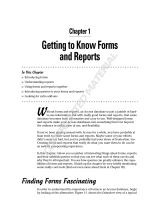 Wiley 978-0-470-04659-3 Datasheet
Wiley 978-0-470-04659-3 Datasheet
-
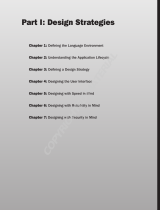 Wiley 978-0-470-41596-2 Datasheet
Wiley 978-0-470-41596-2 Datasheet
-
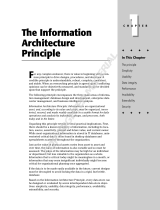 Wiley 978-0-7645-4256-5 Datasheet
Wiley 978-0-7645-4256-5 Datasheet
-
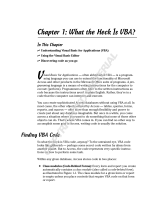 Wiley 978-0-470-03649-5 Datasheet
Wiley 978-0-470-03649-5 Datasheet
-
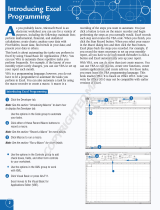 Wiley 978-0-470-59159-8 Datasheet
Wiley 978-0-470-59159-8 Datasheet
-
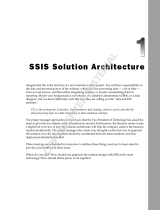 Wiley 978-0-470-52576-0 Datasheet
Wiley 978-0-470-52576-0 Datasheet
-
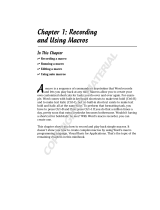 Wiley 978-0-470-04058-4 Datasheet
Wiley 978-0-470-04058-4 Datasheet
-
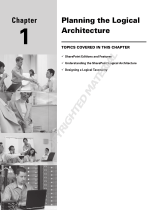 Wiley 978-0-470-64398-3 Datasheet
Wiley 978-0-470-64398-3 Datasheet
-
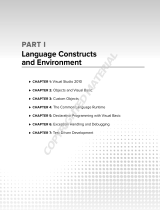 Wiley 978-0-470-50224-2 Datasheet
Wiley 978-0-470-50224-2 Datasheet
-
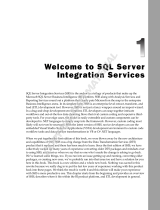 Wiley 978-0-470-24795-2 Datasheet
Wiley 978-0-470-24795-2 Datasheet
Other documents
-
Cecotec 01509 Owner's manual
-
Adaptor 20099 Installation guide
-
Sun Microsystems Sun Java System 2005Q1 Portal Server 6 User manual
-
Microsoft 810-08230 Datasheet
-
Kofax TotalAgility 7.9.0 User guide
-
Corel Draw Graphics Suite X6 User guide
-
Cadence PALLADIUM XP User manual
-
Dell High Performance Computing Solution Resources Owner's manual
-
IBM Fitness Equipment SG24-7368-00 User manual
-
Novell Identity Manager 3.0.1 Installation guide

















































